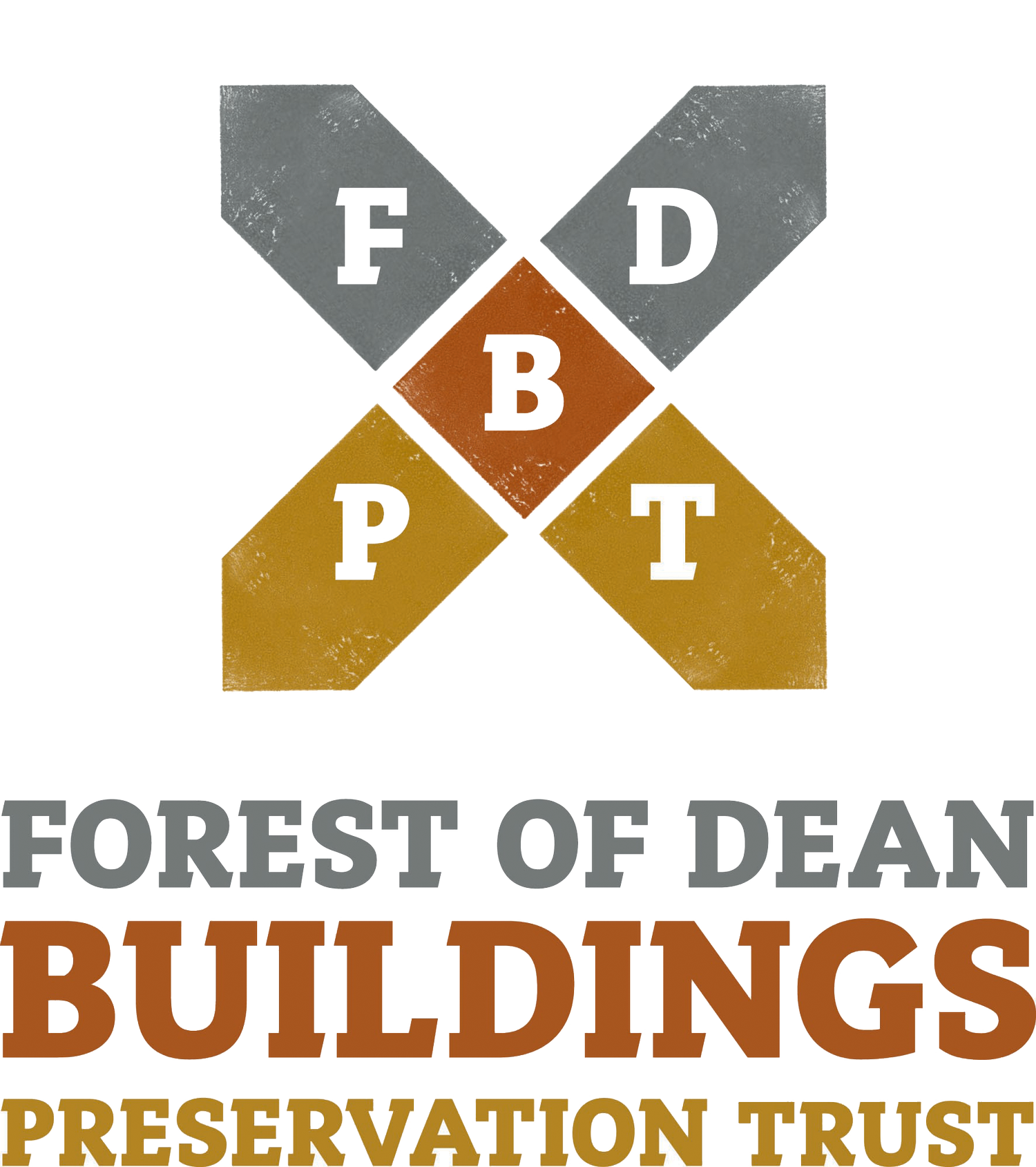The Whitecliff Furnace
Scheduled Monument
-

Location
The Whitecliff Furnace is half a mile southwest of Coleford, alongside the unclassified road from the town centre towards Clearwell, Newland and the Wye Valley at Redbrook. Coleford is readily accessible from Gloucester and Monmouth via the A4136 and from Chepstow via the B4228.
The post code is GL16 8NB and the OS map reference SO568101.
The furnace is the largest remaining structure of the Whitecliff Ironworks, and the front of the furnace is accessible from the footpath on Newland Street, with an interpretation panel and visitors’ book.
There is no parking on site, but by permission of the Whitecliff Improvement Company vehicles may park along the left side of the access road up into Whitecliff Quarry about 100m further from Coleford.
-

History
For centuries the Forest of Dean was one of the main iron making areas in Britain, initially using charcoal for fuel, but by the mid-18th century increasingly successful attempts were made elsewhere to use coke, derived from coal, most successfully in Coalbrookdale. This site was developed with a coke-fuelled furnace between 1798 and 1801 by a local coal owner, James Teague, together with ironmasters from Shropshire, and a second furnace, the one surviving now, was built between 1804 and 1808.
By 1808 Thomas Halford, a stockbroker from London, owned a major share in the Whitecliff Ironworks. Unhappy with the furnace’s output and the lack of return on his investment, Halford sought advice from David Mushet, the leading metallurgist of the day. In 1810 Mushet became a partner and his family moved to Coleford from Derbyshire in 1811. By then, Mushet had rebuilt the works and begun a series of smelting trials. Success was elusive. After six months of experiment Mushet could see no way of making a profit and resold his shares to Halford. In 1816, Thomas Halford was declared bankrupt and the works were abandoned. Whitecliff’s short commercial life was probably due to the poor coking quality of the local coal, and the rich, but alkaline, iron ore of the area and frequent falls in the market price of iron.
-

Rescue and conservation
The ironworks ceased work around 1816 and began to deteriorate from then on. In 1978, the ruin was under threat and a small, local trust was formed to purchase the furnace to prevent its loss. Acting as a sub-committee of the Historical Metallurgy Society, five stages of emergency repairs were made. In 1984 the rest of the site was purchased by Dean Heritage Museum Trust.
Major archaeological work was undertaken but no further conservation repairs took place until 2010-11. New impetus came from the Heritage Lottery funded Landscape Partnership Project: Overlooking the Wye which completed a massive conservation repair of the furnace and stabilised its lining. Information panels were also added.
In 2012 the entire site was gifted to the newly formed Forest of Dean Buildings Preservation Trust. Since then the Trust has initiated a structural engineering survey of the site and undertaken a major conservation repair to the third charging bridge.
The Trust is very grateful to the Wye Valley AONB, English Heritage and the Forest of Dean Local Action Programme for funding that work.
In 2014-16 the Trust has repaired the ancient culvert that carries a major brook across the site and landscaped the road frontage with railings and a footpath to improve the setting of the Monument. The generous funding for this from the Gloucestershire Environmental Trust is warmly appreciated. The site is now about 80% conserved and it attracts a steady stream of visitors. Outstanding tasks include conserving the ruins of the engine house, a high retaining wall and upgrading the Furnace Cottage.
-

How Did It Work?
The major structure is an early, coke-fired blast furnace for smelting iron-ore. Built in 1798-99, it is a rare survival of its type and the only example left in southern England. To its left are the foundations of a second furnace. To the right are the remains of the engine house. Further right is the abutment for a third furnace that was probably not completed. Above at top level, but not accessible, is the charging platform where raw materials, iron-ore and coke arrived, via an inclined way, for feeding the furnaces. After 1812, materials could be delivered direct to top level by the new Coleford - Monmouth tramroad.
Releasing the metal from the ore is called smelting and takes place in the furnace where heat and chemical reactions combine to release the iron in liquid form which pools at the bottom of the furnace. The waste products also melt but being lighter than the metal, they float on it. Both can be tapped, and run out from the bottom of the furnace to solidify on cooling.
The following link takes you to a BBC animation showing how a blast furnace like that at Whitecliff worked.
-

Whitecliff Paint Works
The Rev. Isaiah Birt was a Baptist minister, born on September 6th, 1758, at Coleford where his family had been Freeminers for many generations.
The son of a Baptist minister, he followed his father into the Ministry, training at Bristol College and in 1784 became Co-pastor with the Rev. Philip Gibbs at Plymouth and subsequently at a church in Devonport.
In 1813 he moved to Canon Street Chapel in Birmingham where he stayed for twelve years, founding Sunday Schools, Ragged Schools and missions, poor health forced him to retire to Hackney in London where he died in 1837.
He was a successful minister, an outspoken advocate of civil rights and sympathetic to the French Revolution. He had an interest in several free mines in the Coleford area and was a partner in the Whitecliff Ironworks with James Teague and Thomas Halford. He owned a paint and colour works situated at the Ironworks, in 1806 he patented a manufacturing process to produce a black paint for use in shipping, which utilised waste earth produced by mining.
